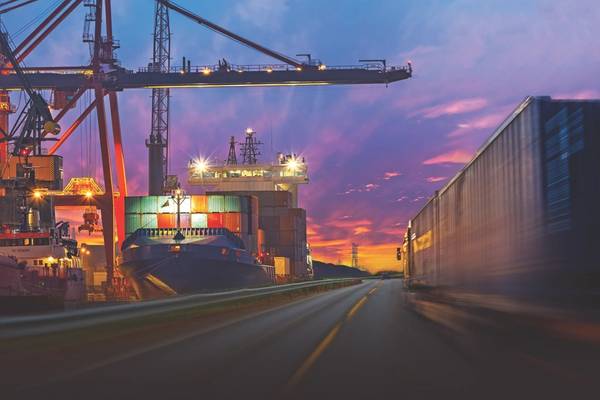The Ocean Carrier Equipment Management Association recently declared the Terminal Weighing Approach (TWA) an industry best practice.
The lack of guidelines for shippers about how to comply with the SOLAS Verified Gross Mass (VGM) regulation that went into effect on July 1, 2016, has also led to a number of questions throughout the industry. Where should containers be weighed? How do shippers provide their signatures for these weights without slowing down the supply chain? Still, as of today, many of the 170 countries that have adopted the regulation have not published guidelines.
Clarity amidst Chaos
In an effort to provide clarity, the Agriculture Transportation Coalition (AgTC) discussed a new proposal at their Conference in June. The primary point of the proposal was to establish a unified practice of weighing cargo containers at the terminal during the in-gate process. Since the Intracoastal Agreement Loss rule (which has been in place for 30 years) already requires terminals to weigh containers as they enter terminals for worker safety, the U.S. Coast Guard agreed that this process adhered to the weighing requirements in the SOLAS VGM regulation. In addition, the Ocean Carrier Equipment Management Association (OCEMA) recently declared the Terminal Weighing Approach (TWA) is an industry best practice.
There is no doubt that weighing containers at the terminal provides the most accurate container weight because the entire container is being weighed at the closest point to being loaded aboard ships. In addition, this is far more accurate than weighing the cargo components separately and adding the parts plus the container to arrive at a combined weight. Weighing the entire container at the terminal greatly reduces the chance of human error.
It just makes sense to support OCEMA’s TWA as an industry best practice. However, simply providing a container’s gross mass does not fully comply with the SOLAS VGM requirement. The SOLAS VGM regulation clearly states that the shipper, or a person duly authorized by the shipper, must provide a signature, either physical or electronic, with the container’s gross mass to the carrier – thus verifying that the gross mass is accurate, as well as assuming accountability for that weight. The signature verifying the gross mass is the key difference between the new VGM requirement and the 1994 SOLAS requirement that shippers were to provide the gross mass of containerized cargo.
Who Is Accountable?
Since the announcement of OCEMA’s TWA, there have been various opinions within the ocean shipping industry about who is ultimately responsible if a discrepancy in container weights is discovered. Some shippers assume that by using OCEMA’s TWA, terminals will be liable in case of a weight discrepancy. And, of course, the terminals do not want to assume this liability. Who would? Another cause of confusion is that some industry “experts” assert that a signature is not required from a shipper when using this approach. However, this assertion is at direct odds with the SOLAS VGM regulation, and it also subjects terminals to liability issues.
In order to secure the signature from shippers, the South Carolina Ports proposed that the terminal and the shipper enter an agreement where the terminal will submit VGM on behalf of the shipper, thus taking the responsibility for mis-declared container weights.
Historically, shippers and terminals have never had business relationships. The difficulty and time spent setting up a contractual relationship could slow down the supply chain. Now the question is – how does the industry comply with the VGM requirement without slowing the movement of the cargo?
The Common Sense Approach: VGM Submission via a Secure Online Portal
Trade Tech recommends a “painless” VGM submission process as a best practice where shippers use a cloud-based portal in conjunction with OCEMA’s TWA in order to file a complete VGM declaration. We see two approaches for capturing both the shipper signature and the terminal weight. In the first case, the portal “orders” a weighing from the terminal. After the in-gate process, the terminal transmits the weight back to the portal that automatically completes the VGM declaration and transmits it as a regular VGM declaration to the carrier.
In the second case, shippers create shipment instructions within the portal, including the usual VGM responsibility signature. This signature is automatically transmitted to the carrier, demonstrating that the shipper trusts that the stated weight coming from the terminal is true and accurate. The terminal then weighs the container and sends the weight to the carrier through normal means. From there, carriers combine the weight received from the terminal and the electronic signature received from the shipper to form complete VGM declaration. The carrier transmits the terminal weight back to the shipper for record-keeping purposes.
With the addition of one of these simple approaches, the VGM requirement can be effectively met without shippers and terminals entering into any kind of legal contractual relation or terminals assuming liability.
While the main goal of this process is to meet the VGM requirement, there are additional benefits for both carriers and shippers. Using this type of online portal solution will lead to fewer booking exceptions for carriers, allowing them to know for certain which booked containers they will receive prior to their arrival at the terminal. As a result, carriers can plan accordingly. In addition, by using a cloud-based portal in combination with OCEMA’s TWA, shippers do not have to be directly involved with weighing the cargo containers and the extra handshake to capture the container weight, which happens automatically in the background. This also gives shippers full visibility into cargo movement from the first mile, and information flow is streamlined and faster.
The best practice of using OCEMA’s TWA, in conjunction with Trade Tech’s recommended VGM submission process, provides the most accurate container weight and ensures the VGM requirements are met – all without slowing down the supply chain or adding extra manual steps. As the industry learns more about communication, liability and supply chain issues in the current process for VGM submission, it will become more important that this best practice is adopted throughout the industry to meet the VGM requirement.
Why Should Containers be Weighed?
- Deneb - On June 9, 2011, the container ship Deneb capsized at a terminal. After the incident, investigators found that 1 out of 10 containers aboard had actual weights that far exceeded the declared weights.
- MSC Napoli - On January 18, 2007, during a storm in the English Channel, the container ship MSC Napoli developed cracks in its hull and took on water. In order to minimize the environmental damage caused by this accident, the ship was intentionally grounded. During the investigation it was discovered that approximately 20 percent of the containers were heavier than their declared weights.
- P&O Nedlloyd Genoa - On January 27, 2006, during a storm in the North Atlantic, the container ship P&O Nedlloyd Genoa lost 27 containers overboard and 28 others collapsed. During the investigation, it was discovered that the weight for two of the damaged containers was significantly over the declared weight.
What information should be included in the VGM submission?
- Container Number: Ocean Carrier Booking Number
- Verified Weight: Responsible Party (Shipper named on the carrier’s BoL)
- Unit of Measurement: Authorized Person (Signature: physical or electronic)
The Author
Bryn Heimbeck is co-founder and president of Trade Tech (www.tradetech.net). Bryn can be reached at: [email protected].





